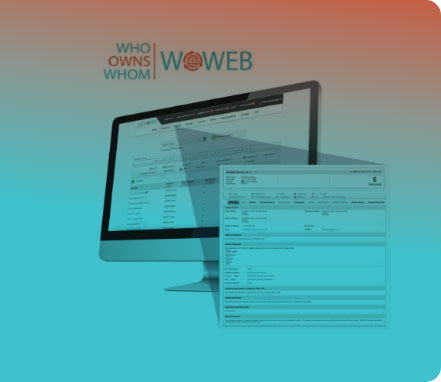Report Coverage
This trends report includes a description of the logistics sector and its environment, infrastructure, major role players and performance. The report discusses the shift from rail to road, port activity, global competitiveness, and sector challenges, such as the effect of rail inefficiencies and poor road infrastructure and conditions, transport vehicle attacks and cable theft. Who Owns Whom trends reports do not include company profiles. These and more detailed analyses on the industry and its players are contained in several separate related Who Owns Whom reports.
Introduction
• South Africa’s commercial activity and economic performance are closely linked to its ability to transport goods within and beyond its borders.
• The logistics sector has outpaced economic growth of the last two years.
• Although transport infrastructure is among the best on the continent, a lack of maintenance and infrastructure investment, with a resultant shift from rail to road, as well as congested and inefficient ports, has led to high usage costs.
• The deterioration of logistics performance compared to other countries is evident in South Africa’s low ranking in the World Bank’s Logistics Performance Index and its Container Port Performance Index.
• The sector is plagued by low economic growth, rising fuel prices, loadshedding, a lack of skills, collapsing infrastructure and crime.
• Government has recently renewed its commitment to fix the problems in the sector.
Selected Highlights
Miscellaneous Logistics Changes
• In 2022 the logistics sector contributed R451.4bn to GDP at current prices, 12% more than R402.8bn in 2021. The sector’s share of GDP increased to 8.8% in real prices in 2022 from only 5.9% in 1993, to reach 9.0% of GDP by the first quarter of 2023.
• South Africa has a land mass of 1.2 million km2 and a total coastline of 2,798km making it the 25th largest in the world.
• The freight moved by rail has halved from 30% of total land transport tonnages in January 2015, to 14% by May 2023, while the share of road freight transport has increased from 70% to 86%.
• Post-pandemic recovery of automotive exports is evident in a 30.4% increase in the number of vehicles handled at ports 2021 and a 28.1% increase in 2022.
• The transport sector accounts for 10.8% of all greenhouse gas emissions, with road transport contributing 91.2% of the transport sector’s share. The DoT’s Green Transport Strategy aims to reduce emissions by shifting 30% of freight transport from road to rail and converting 5% of the vehicle fleet to cleaner alternative fuel and efficient technology vehicles in the next five years.
Outlook
• Despite a tough economic environment, the logistics sector is poised to continue to grow over the next decade as goods still need to be transported, and due to government’s commitment to fix sector’s problems, and the private sector’s adoption of new technology.
• Forecasts indicate the logistics industry to grow well above forecasts for growth of the South African economy.
• There is evidence of resilience driven by increased demand for goods and services and advancements in technology.
Full Report
R 20 000.00(ZAR) estimated $1063.58 (USD)*
Table of Contents
[ Close ]| PAGE | ||
|---|---|---|
| 1. | INTRODUCTION | 1 |
| 2. | LOGISTICS SECTOR OVERVIEW | 2 |
| 2.1. | Market Description and Role Players | 2 |
| 2.2. | Logistics Environment | 3 |
| 2.3. | Logistics Infrastructure | 5 |
| 3. | SIZE OF THE SECTOR | 7 |
| 3.1. | Transport GDP growth | 7 |
| 3.2. | Growth Prospects | 9 |
| 4. | RAIL TO ROAD SHIFT | 9 |
| 5. | LOGISTICS SECTOR PERFORMANCE | 14 |
| 6. | PORT ACTIVITY | 18 |
| 7. | INDUSTRY TRENDS | 20 |
| 8. | GLOBAL LOGISTICS COMPETITIVENESS | 24 |
| 8.1. | World Bank Logistics Performance Index | 24 |
| 8.2. | Ports’ Competitive Position | 26 |
| 9. | TRANSPORT SECTOR CHALLENGES | 28 |
| 9.1. | Economic Loss due to Rail Inefficiencies | 28 |
| 9.2. | Effects of Poor Road Conditions on Logistics | 31 |
| 9.3. | Transport Vehicle Attacks | 32 |
| 9.4. | Cable Theft on the Rail Network | 33 |
| 10. | GOVERNMENT INTERVENTIONS | 36 |
| 11. | OUTLOOK | 37 |
| 12. | REFERENCES | 38 |
| 12.1. | Publications | 38 |
| 12.2. | Websites | 39 |



